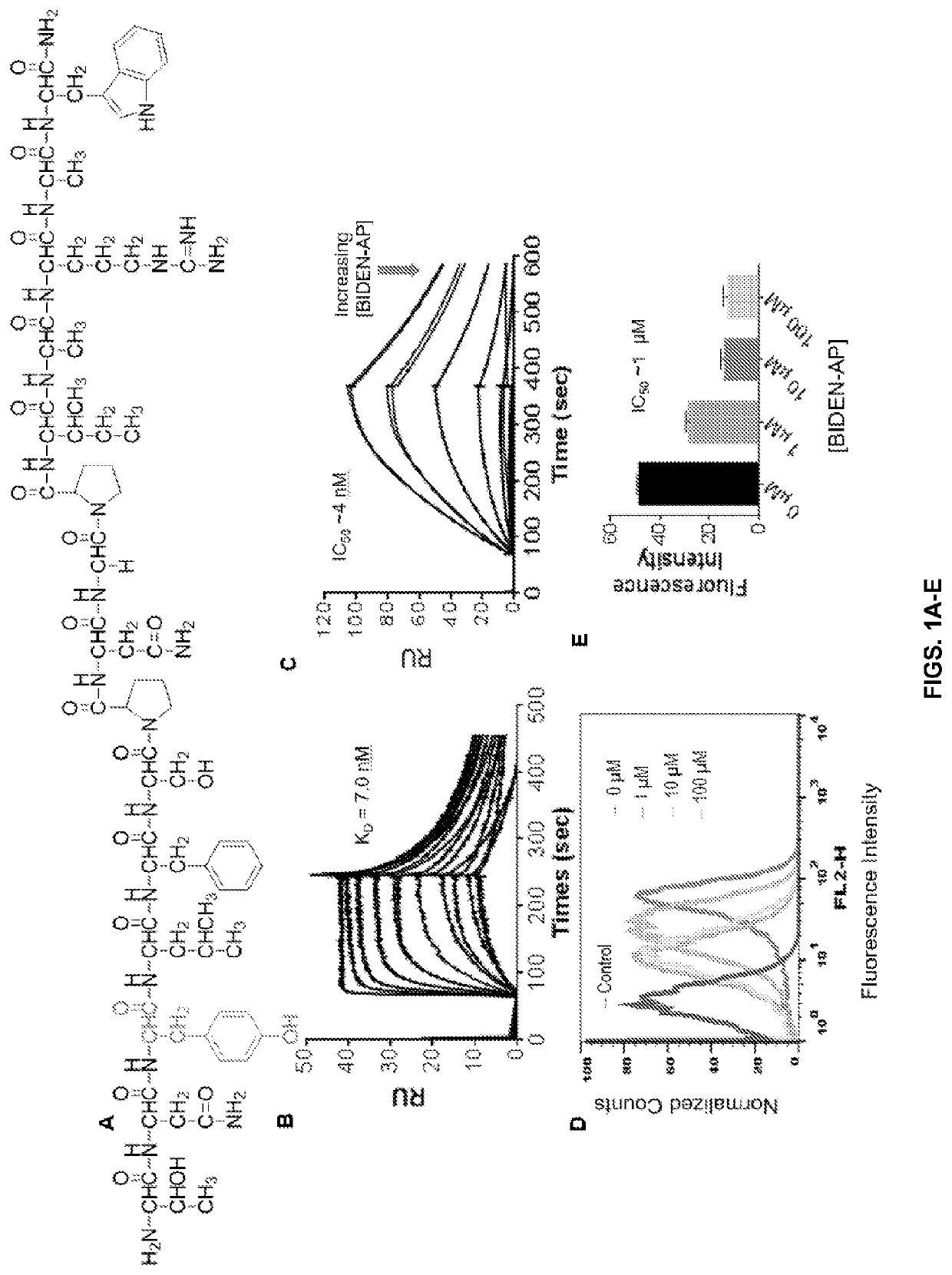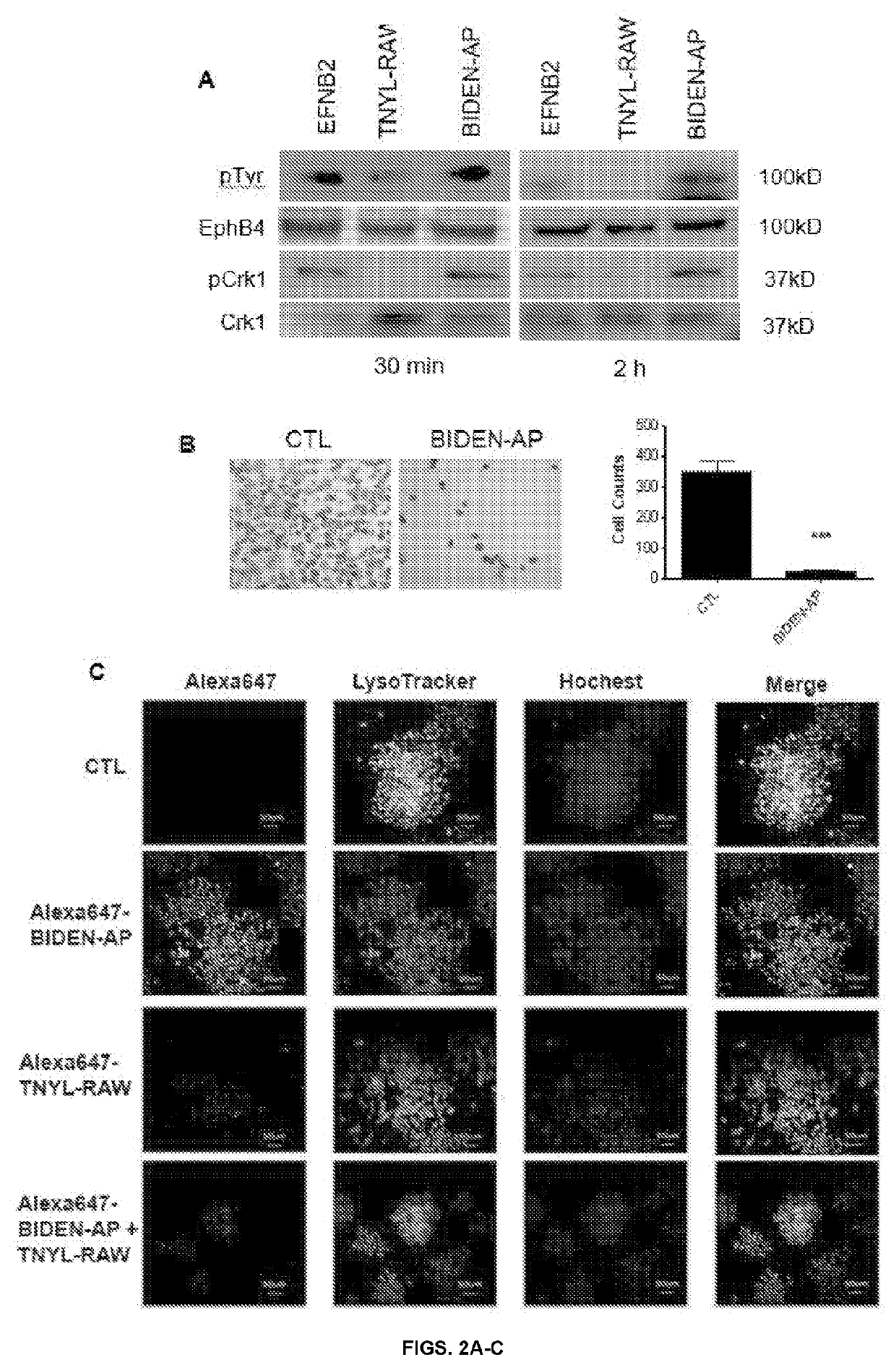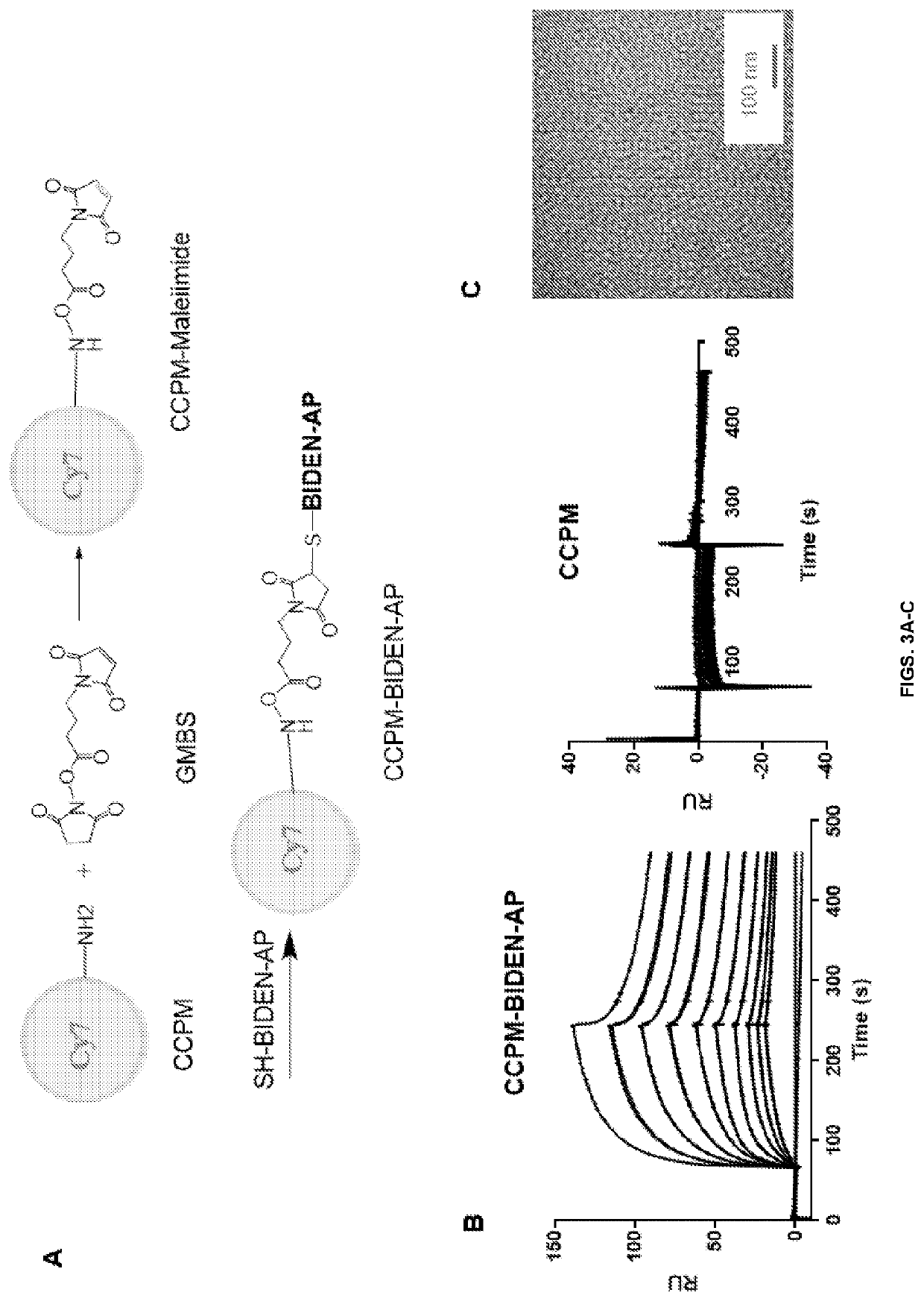Therapeutic peptides
a technology of peptides and peptides, applied in the field of molecular biology and medicine, can solve the problems of no small-molecule-based, dual-function, ephb4-binding peptides currently available, and continue to be a significant clinical problem
- Summary
- Abstract
- Description
- Claims
- Application Information
AI Technical Summary
Benefits of technology
Problems solved by technology
Method used
Image
Examples
example 1
ion of L-Tyr with D-Tyr in TNYL-RAW (SEQ ID NO: 12) Peptide LED to Conversion from EphB4 Antagonist to EphB4 Agonist
[0112]Surface plasmon resonance (SPR) was used to measure binding affinity of a small library of TNYL-RAW (SEQ ID NO: 12) analogues to purified EphB4. The resulting data revealed that truncation of C-terminus Trp-P15 and Ala-Trp (P14-P15) motifs progressively reduced the binding affinity of peptides to EphB4 (FIG. 10). This agrees with previous reports that the RAW motif is critical for fitting into the EFNB2 binding pocket of EphB4 (Chrenick et al., 2006b). However, the N-terminus Thr-P1 and Thr-Asn (P1-P2) motif could be truncated without affecting the binding affinity of peptides, suggesting that the two N-terminus amino acids Thr-Asn are not directly involved in receptor binding and therefore could be used as a site for conjugation of imaging probes or pharmacokinetic modifiers in diagnostic and therapeutic applications.
[0113]Next, a D-amino acid scan was performed...
example 2
on of BIDEN-AP to Core-Crosslinked Polymeric Micelles (CCPM) Maintained its Binding to EphB4 and Agonistic Activity
[0118]CCPM has been used to improve pharmacokinetics and enhance peptide stability for in vivo imaging applications (Yang et al., 2007; Zhang et al., 2011a; Zhang et al., 2011b; Zhao et al., 2012). The cross-linked core of CCPM prevents premature micelle disintegration, while the brush-like polyethylene glycol forms a dense protective layer on the micelle surface that minimizes micelle uptake by the organs of the mononuclear phagocytic system. CCPM-TNYL-RAW (SEQ ID NO: 12) displayed 4-fold higher systemic exposure than TNYL-RAW (SEQ ID NO: 12) (area-under-the time curve [AUC]=138% ID h / mL versus 29.1% ID h / mL), mainly as a result of significantly slower systemic clearance (Zhang et al., 2011b). We therefore synthesized CCPM-BIDEN-AP using a two-step reaction scheme (FIG. 3A). The resulting conjugate retained the binding affinity to EphB4 (FIG. 3B). The mean diameter of ...
example 3
Based Agents Reduced the Angiogenic Properties of Endothelial Cells and Sensitized Endothelial Cells Resistant to Anti-VEGF Agents to Cell Death
[0119]We next determined the potential of BIDEN-AP in blocking the reverse EFNB2 signaling in endothelial cells. Using RF24 endothelial cells, our results from a scratch assay indicated that BIDEN-AP but not TNYL-RAW (SEQ ID NO: 12) (both 50 μM) significantly inhibited cell migration compared to untreated controls (FIG. 17). Further, both BIDEN-AP and EFNB2-Fc significantly inhibited the formation of capillary-like tubes from RF24 cells (FIGS. 4A-B). Therefore, our data showed the potential of BIDEN-AP in compromising angiogenic property of endothelial cells by interfering with reverse EphB4-to-EFNB2 signaling.
[0120]Given the important role of endothelium in adaptive changes with anti-angiogenic therapy (Bergers et al., 2008), we further tested the effects of BIDEN-AP in overcoming resistance to anti-VEGF therapy in RF24 cells. To do this, w...
PUM
| Property | Measurement | Unit |
|---|---|---|
| diameter | aaaaa | aaaaa |
| diameter | aaaaa | aaaaa |
| diameter | aaaaa | aaaaa |
Abstract
Description
Claims
Application Information
 Login to View More
Login to View More - R&D
- Intellectual Property
- Life Sciences
- Materials
- Tech Scout
- Unparalleled Data Quality
- Higher Quality Content
- 60% Fewer Hallucinations
Browse by: Latest US Patents, China's latest patents, Technical Efficacy Thesaurus, Application Domain, Technology Topic, Popular Technical Reports.
© 2025 PatSnap. All rights reserved.Legal|Privacy policy|Modern Slavery Act Transparency Statement|Sitemap|About US| Contact US: help@patsnap.com



